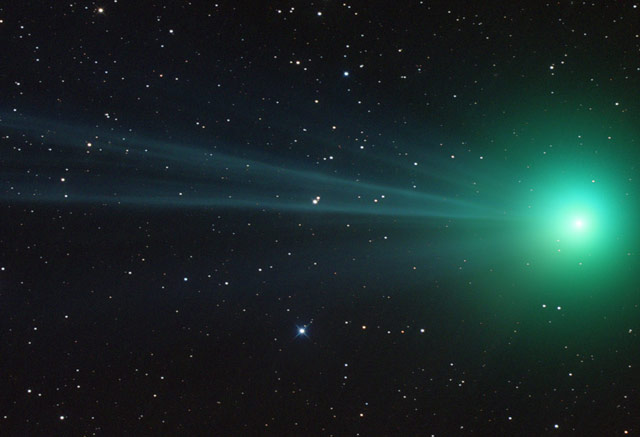Hi everybody!
Here's the latest article from the Astronomy site at BellaOnline.
It's Alive! - book review
The Universe Verse is back. Book 1 was the Big Bang Theory in verse and drawings. Now stars and planets have formed, but something new is happening: Life. Book 2 is about evolution by natural selection. In its cheerful verse and lovely color drawings, it's also a love poem to our beautiful Earth.
http://www.bellaonline.com/articles/art13319.asp
*The Planets*
I still haven't seen the planets gathering in the pre-dawn sky. My normally unlimited enthusiasm for skywatching is very limited at 4.30 in the morning, which is when I'd have to get up to beat the Sun. Perhaps some of you who are early-birds or living where the sun doesn't get up so early will have seen them. “Sky & Telescope” magazine has done a time lapse to show where they are into early June. I notice that the crescent moon rejoins them at the end of this month. (If you don't have QuickTime installed, you may not be able to run this.) http://media.skyandtelescope.com/video/planet-animation-may2011.mov
*Planetarium*
Here is something you might find useful and fun - a planetarium that runs on your browser: the Neave Planetarium. http://www.neave.com/planetarium/help/ It defaults to London, England, but you can easily reset the location by clicking and dragging or by using the link to FlashEarth. You can change the time and date of the sky view, and pointing the mouse to a star gives you its name and some information about it. Good for locating planets, seeing what will be visible, learning the shapes of constellations and lots more. (You need to have Javascript installed to run this.)
*The Milky Way*
Wow! Now *this* is what I call a sky! http://www.universetoday.com/wp-content/uploads/2011/04/eso-Abyss.jpg It was taken by Yuri Beletsky of the European Southern Observatory (ESO). On the right of the picture you can see one of the telescopes of the VLT (Very Large Telescope) which is located in the Atacama Desert in Chile. The Atacama has dark, dry skies and is home to many telescopes. If you live in the southern hemisphere, you will probably recognize the bright objects in the sky on the left hand side as the Large Magellanic Cloud (LMC) and Small Magellanic Cloud (SMC). The Magellanic "Clouds" are actually satellite galaxies of the Milky Way.
*Hubble pictures*
Here is one of the fantastic Hubble pictures. Its a face-on spiral galaxy known as NGC 3982: http://imgsrc.hubblesite.org/hu/db/images/hs-2010-36-a-print.jpg These are not simple photographs, but composites of quite a number of images. They make use of multiple images in order to get good quality data and often to get different wavelengths included. The invisible wavelengths have to be shifted somewhat into colors we can see. If you would like to see the steps they go through, have a look at this video: http://imgsrc.hubblesite.org/hu/db/images/hs-2010-36-a-print.jpg I think the process usually takes more than two minutes!
That's all for this now. Wishing you clear skies.
Please visit astronomy.bellaonline.com for even more great content about Astronomy.
To participate in online discussions, this site has a community forum all about Astronomy located here -
http://forums.bellaonline.com/ubbthreads.php?ubb=postlist&Board=323
I hope to hear from you sometime soon, either in the forum or in response to this email message. I welcome your feedback!
Do pass this message along to family and friends who might also be interested. Remember it's free and without obligation.
Mona Evans, Astronomy Editor
.
astronomy Newsletter








